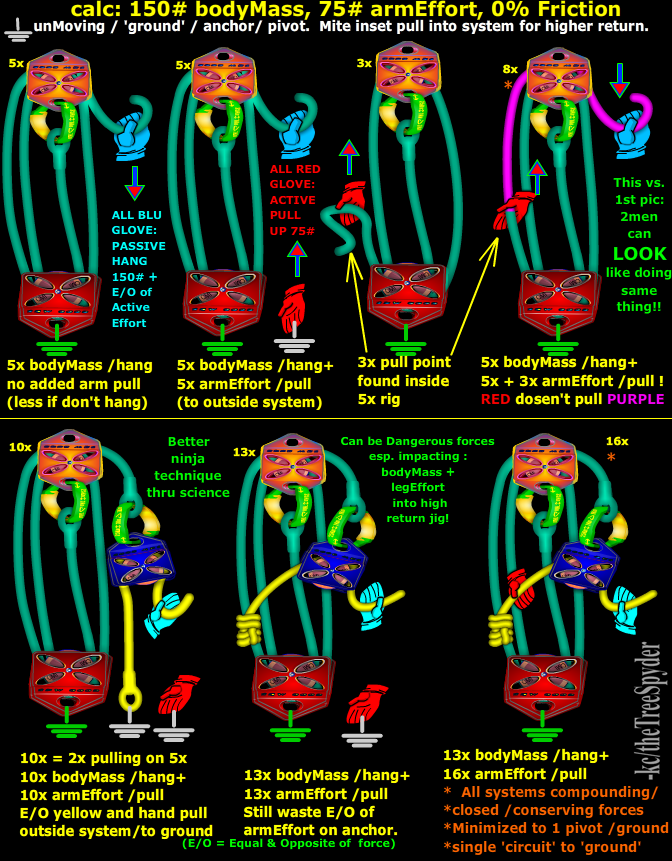i guess i take their view thar bro, sorry i missed this
>>and larger pulley is easier on rope and more leverage ratio(all else held as same) over bearing/bushing etc. for higher efficiency in both departments.
.
In all examples i think it is best to set parental extremes/bordering potentials, then limit to that finite
>>as a domain, then divided
>>or taxed by friction etc.; but show all math/homework as full disclosure model
>>friction is a variable of the domain, not a definition of the domain type model
.
This is all yin/yang to me
>>the full potential extreme and then it's non of Zer0 as purebred parents, points between inherit so much of each
>>just as cos1(100%)and cos0(0%)@ 90 degree crossing, cos1 and it's non sine1(cos0) as extremes
>>parents to the hybrid inheritances from each to the degrees between
.
Everything is Displacement(great automotive term), total volume of displacement of distanceXforce input
>>is equal in output (parity check each against the other)
>>less the friction taxations of linear force converted to radial>>and back
>>each conversion must tax, like pouring a gallon of milk from container to container
>>no matter how carefully efficient>>less at end
And just as in pulleys, the co$t of preserving the last 10-15% of the efficiency is the most immense
>>as the smallest increments of change, just as seen in cosine when as like polish up towards 0% deflection
.
A pulley set is as like a transmission, even a zRig with 1 leg to input, 2legs to machine pivot, 3legs to output
>>for more power at less distance potentials as power increase is just un-requitted distance/unachieved
>>so distance and force are reciprocals traded
>>noting the distance in/out is at full calc potential
>>but only the increased(or decreased)force portion taxed to less than full potential
Then can rotate the system functions to the 1-2-3 leg choices to make the 2x as input
>>3x as pivot and 1x as output >> would be half as strong a pull
>>but pull 2x as far(like short drive way run with truck to pull up longer hill)
>>WARNING: this also means covering 2x as much distance as input for DOUBLED SPEED
Voila, Transmission ! >> can have a Super Granny or a weak Hot Rod !
The 1,2,3 lever class of the mechanic is determined by input/output relationships of direction and force(link)
Pulleys are jest rolling levers !
.
The compound systems are amazing, but best on adjustable prussic as reach end of run early between the internal systems, before whole system is totally contracted
>> the 2handed things personally try to show (as inverted DdRT mechanic) don't have jam up problem unless another inset system.
in the simplest forms, 1of the 2 effort or its reflection is w/o friction tax
>>and if target direction is down, bodyweight too then can be untaxed by friction..
.
again, Pulleys are jest rolling levers
2 hand input theory translated from flexibles to rigids(link)
